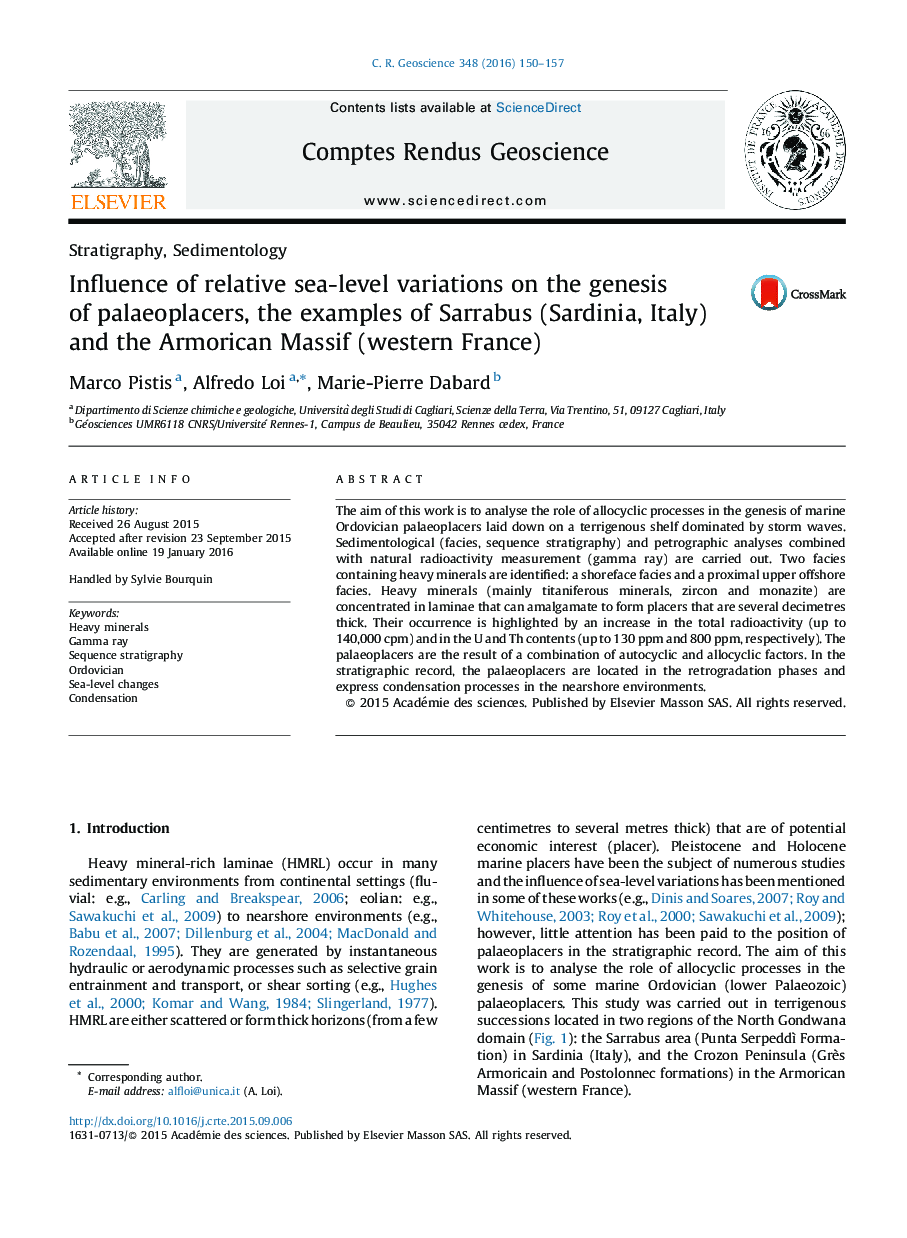| Article ID | Journal | Published Year | Pages | File Type |
|---|---|---|---|---|
| 6347821 | Comptes Rendus Geoscience | 2016 | 8 Pages |
Abstract
The aim of this work is to analyse the role of allocyclic processes in the genesis of marine Ordovician palaeoplacers laid down on a terrigenous shelf dominated by storm waves. Sedimentological (facies, sequence stratigraphy) and petrographic analyses combined with natural radioactivity measurement (gamma ray) are carried out. Two facies containing heavy minerals are identified: a shoreface facies and a proximal upper offshore facies. Heavy minerals (mainly titaniferous minerals, zircon and monazite) are concentrated in laminae that can amalgamate to form placers that are several decimetres thick. Their occurrence is highlighted by an increase in the total radioactivity (up to 140,000Â cpm) and in the U and Th contents (up to 130Â ppm and 800Â ppm, respectively). The palaeoplacers are the result of a combination of autocyclic and allocyclic factors. In the stratigraphic record, the palaeoplacers are located in the retrogradation phases and express condensation processes in the nearshore environments.
Related Topics
Physical Sciences and Engineering
Earth and Planetary Sciences
Earth and Planetary Sciences (General)
Authors
Marco Pistis, Alfredo Loi, Marie-Pierre Dabard,
